Welcome to the Horus Heresy. With the release of the Age of Darkness and the second edition of the rules, there’s never been a better time to jump into (or return to) a world set 10,000 years before Warhammer 40,000. Over the next few weeks this series is going to take a look at how to build your army, and how those choices you make will affect you on the battlefield.
Between the Horus Heresy series and the Siege of Terra, the Black Library has spent the last 16 years cranking out 50 books, numerous audio dramas, innumerable short stories and a dozen collections telling the tale of the heresy, with an extremely variable hit rate. They go from genuinely good military SF through a wide range of solid Black Library fiction and into some that are best… left unread and unremembered.
During that bit of 2020 where we all suddenly had a lot of time on our hands, we read them all. Every single word the Harlequins have prised from the Black Library on the Heresy. Read! The dizzying highs! The furiously abyssal lows! The Garro-shaped middles.
This article covers the stalwart Loyalists – look here for the dastardly traitors.
Dark Angels
For all that they’re the first, they haven’t been dealt a good hand in the Heresy series – the core narrative they’re given isn’t too strong and the old Black Books are probably the best source for Dangle Heresy fiction. A significant chunk of the problem is that the Dark Angels’ story is set in the time period of the Horus Heresy, but not actually about the Heresy. Hence the earlier books are about laying the seeds for the 40K portrayal of the First, as opposed to trying to set the stage of the Heresy. It’s very off-putting. For all that, there’s still some good out there – but as you’d expect for the First, it’s squirrelled away and shrouded in secrets, and has the best Goonhammer art to go along with it as well.
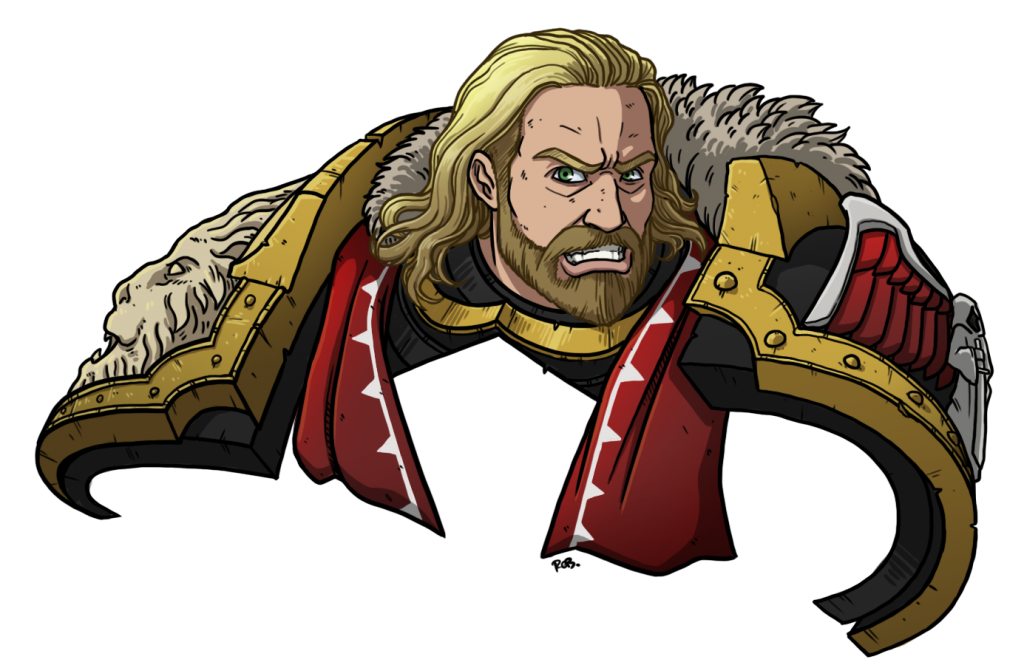
Leman Russ, the Great Wolf, by Chris Wraight.
Told from the perspective of their erstwhile rivals (and why they *become* erstwhile rivals), this Saga nevertheless illuminates both the strengths and weaknesses of the Dark Angels. Furthermore, it tells this tale without getting bogged down in the various internal organizations of the Dark Angels or trying to set the stage for older Black Library novels about the Dark Angels. The novel also explains how the Lion, for all his faults, can have brothers who love him.
Savage Weapons, by Aaron Dembski-Bowden
The Thramas Crusade is the Dark Angels whole big thing in the Heresy, duking it out with the Night Lords in a crushing and punitive campaign that keeps both occupied in the early stages of the Heresy. Savage Weapons gives us almost pure unadulterated combat, a really savage throwdown between Primarchs and Heroes. The Lion, Corswain and Alajos go toe to toe with Sheng, Sevatar and the Night Haunter and, while the ending is a little bit of a damp squib, seeing the Dark Angels in a proper knock down, insult slanging, spine stabbing, fight is very satisfying.
White Scars
The White Scars languished for a long time without books of their own, but then – suddenly, as shocking as a mounted charge from the steppe – exploded into the Black Library with a series of solid offerings that more than made up for their long absence
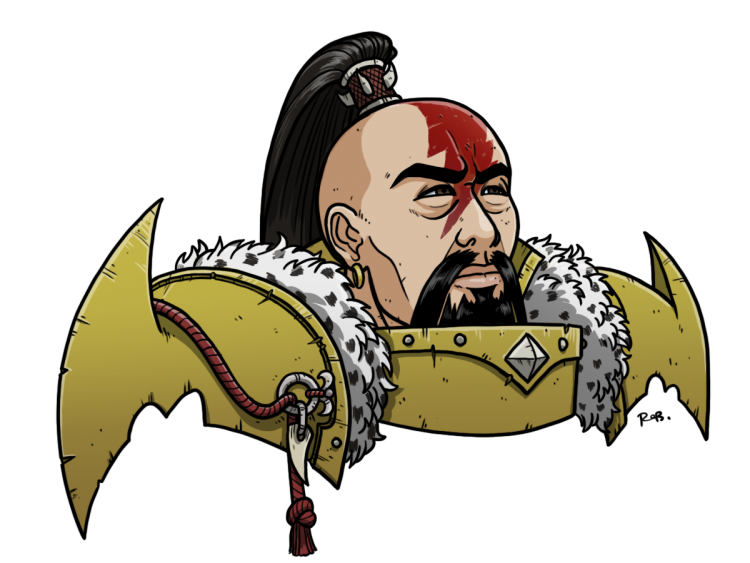
The White Scars have three focus novels. All are written by Chris Wraight, and all are excellent. They tell the story of the White Scars as they select their sides in the Heresy, reconcile with the consequences of choosing a side, and punking the hell out of Mortarion.
Scars, by Chris Wraight
Scars gives us the origin story of a White Scar, and some mid Heresy action and the Khan’s first spot in the limelight, AND some much needed follow up to the Prospero Burns/Thousand Sons duology – all in one neatly wrapped up package. Solid action, some excellent fleet based combat and an interesting look into traitor-aligned loyalists kicks off a Wraight trilogy that ends in a very interesting place.
There is a warning with this one, though. In writing about the White Scars, there’s a certain trend towards Orientalist tropes, which Wraight largely avoids (to his credit), but Scars contains numerous descriptions of The Khan – and the White Scars themselves – as “Inscrutable”. Now I don’t believe there’s any malice there, but using “inscrutable” to refer to the only Asian-coded Legion is problematic, at best. Worth being aware of.
A good point made in the comments is that Scars, of the Wraight trilogy, is the one that contains the most, and worst, stereotypes of Asian cultures. Go read Path of Heaven and Warhawk instead.
A Game of Opposites, by Guy Haley
Set in between “Scars” and “The Path of Heaven”, in which the White Scars are being hunted by the Iron Warriors. The description above pretty much tells you how this is going to go and why. Nevertheless, Haley uses a well-developed Iron Warriors Warsmith to contrast to the White Scars.
Warhawk, by Chris Wraight
The Siege books have been very variable, and even when good, they’ve had a tendency towards a static viewpoint – the slowly shrinking defenders, the feverish attackers. Warhawk turns that on its head by giving Wraight and the Khan the freedom to go on the offensive, ending up with a very fun, very dynamic look at a futuristic cavalry charge, insane high-tech concepts and the slow, really quite cute, degeneration of the Death Guard into the Nurgle-worshipping weirdoes we know and love. Through it all runs the bright, shining spear of the White Scars doing what they do best (and laughing while doing so) – and will never get to do quite as gloriously again.
Space Wolves
Do you really, really, really love reading the line “there are no Wolves on Fenris?” You’re in the right place, bucko. The Sons of Russ got the first Heresy book that I read and thought “this would be a great book even if I hated Warhammer”, and the first one that really turned the 40k-derived fluff for a legion upside down. Forget nonsense wolfy-wolf-wolfers, this is the land of the Rout, the Vlka Fenryka and the wet leopard growl.

Prospero Burns, by Dan Abnett
The saga of the Space Wolves in the Heresy is a transition from an army of ruthless, grim Vikings to the Wolfy friends that we all know and love in the 41st Millennium. That starts with the razing of Prospero, wherein the Wolves exercise their ultimate ruthlessness on what-should-be-allies for the last time.
Wolfspear, by Guy Haley
Wolfspear is one of the more fun novels of the Heresy, because it was a sign that Black Library was finally trying to move the story forward. There, Leman Russ and the Space Wolves stop sitting on their collective rass and try and stop Horus aboard the Vengeful Spirit. Russ first takes a journey into the Fenrisian Underworld before setting off on his ill-fated quest, which winds up killing a number of Rune Priests in the process. This bit is fun because it shows another possibility for Russ – that of a Terran-raised Russ. These bits of “summertime Fenris” are one of the core highlights of the novel.
The one downside of this novel is that the Wolves are all overshadowed by the antics of a Mechanicum Tech-Acolyte and possibly the single most gutsy action of the Heresy until The End and the Death.
Howl of the Hearthworld, by Aaron Dembski-Bowden
Do you want to know how ADB approaches the Space Wolves? Yes, you do. Short, sweet and tells you what Leman Russ thinks of his brothers: very, very little
Imperial Fists
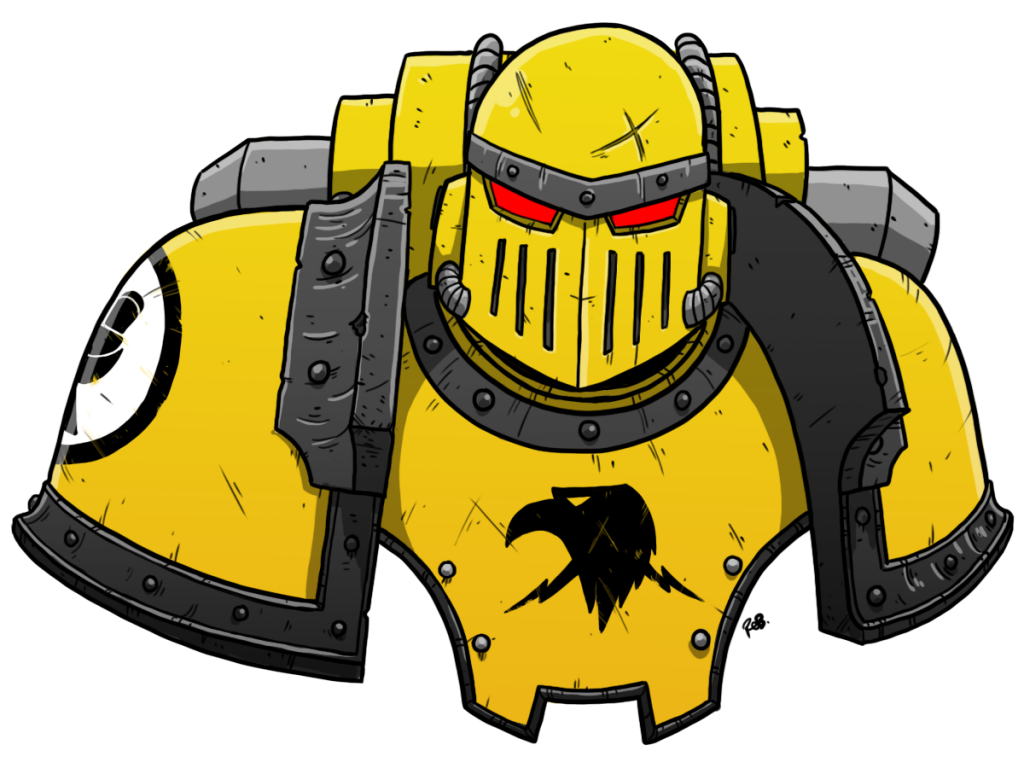
The Crimson Fist, by John French
If the Iron Warriors have had inconsistent characterisation, Alexis Polux is one of the reasons why. While there’s some strange mid-Heresy Dorn going on in and around the Battle of Phall period, you can mostly ignore it in favour of Alexis “The Crimson Fist” Polux, at this stage essentially “just some dude”, absolutely clowning repeatedly on Perturabo and the Iron Warriors. Fun, because it’s Fists doing defence in a better way than sitting in a little fort. Even more fun, because it’s a merciless pantsing delivered by a Fists Captain against an actual Primarch.
Praetorian of Dorn, by John French
This novel is a rip-roaring adventure as Rogal Dorn and his (then) top Lieutenant, Archamus, have to uncover an Alpha Legion plot that spans the Sol System. This novel goes into the background and development of the Seventh Legion as they began incorporating Inwit Marines, and the culture of the Imperial Fists from the viewpoint character of Archamus. Another thing I like about this particular novel is that French is not necessarily burdened with setting up grand elements of the 40K universe with Archamus.
The novel also showcases how all of Rogal Dorn’s virtues combine to make him very good at his job when he shoves his Chainsword into Alpharius’ head. In part because Alpharius was a traitor but also because Dorn was tired of Alpha Legion bullshit.
Saturnine, by Dan Abnett
The Fists suffuse the Siege of Terra books, very much as you’d expect them to. They’re the final line of defence, writing their names into legend in the blood of traitors and holding the line until, and beyond their last breath, in the name of their Lord Dorn. This novel also showcases *why* Dorn is the Praetorian of Terra, and after several novels of Dorn’s defenses getting ignored through plot reasons, his masterstroke is one heck of a high point. While the Primarch, Sigismund and others all feature in Saturnine, no one fights in the name of their Lord Dorn like Camba Diaz with his line in the sand. I challenge you to not feel your hackles rise when Diaz declares this far and no further, in the name of his Lord Dorn. The Black Library’s best written frenetic combat follows, slash, stab, hold for his Lord Dorn. Kill and die, in the name of his Lord Dorn.
Blood Angels
The Blood Angels have always loomed large in Heresy lore – but usually only at the very end. With the end of the series rapidly upon us, the sorrowful legion and their angelic Primarch are finally receiving the novels they deserve, and it’s about time. The only regret is that one of them in particular didn’t come much, much earlier in the series.

The Herald of Sanguinius (Audio Drama), by Andy Smillie
This one is an audio drama, set during Imperium Secundus. This novel focuses on Azkaleon, the Sanguinary Guard, and a surprise character. This novella gets into the love and devotion that the Blood Angels have to their Primarch, and shows Sanguinius’ annoyance at being stuck in a side plot.
Ruinstorm, by David Annadale
Sanguinius accepts his fate and why he accepts his fate. While the cover has three Primarchs, and while this story illuminates the Dark Angels and Ultramarines, this story offers the most insight into the Blood Angels.
This novel offers some of the most weird images in the Heresy, to entirely-reworked Daemon systems to the Necrosphere above Davin. Delving into the madness of Chaos provides Annadale with a chance to show us the nobility – but also the fear – of the Blood Angels in stark contrast. Even if the novel itself isn’t all Blood Angels all the time, they are still imagination-provoking and well worth a read.
Echoes of Eternity, by Aaron Demski-Bowden
I dunno if you know this, but ADB is very good. When he touches a legion, they spring alive off the page, not just with depths you didn’t know, but with ideas and promise for your own lore and your own spaces. When you take a sudden break out of the intense, claustrophobic and altogether excellent Echoes of Eternity to flash back to the discovery of Sanguinius and the transformation of the Revenant Legion into the Blood Angels, you’re at first taken aback that the brutal pace has slowed. Through the viewpoint characters of Nassir Amit, Dominion Zephon, and some of Zephon’s thralls, you’re drawn into the background the 9th always deserved, the origin story of the legion that perhaps changed the most when their Primarch was found. Equipped with that knowledge, you’re gifted the rest of the book and it goddamn slaps.
Iron Hands
I could read about Shadrak Meduson all day, but aside from the occasional Shattered Legions appearance, the Iron Hands were cursed by Istvaan and the Dark Gods to never quite get their breakthrough moment in the Heresy books.
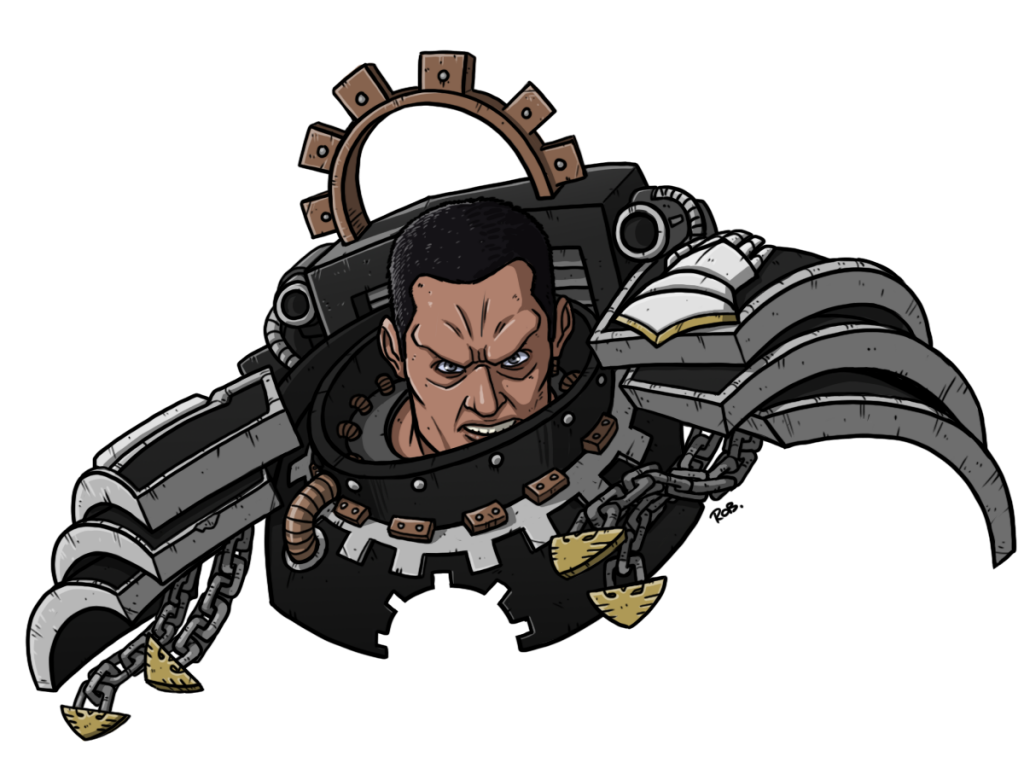
Ferrus Manus, Gorgon of Medusa, by David Guymer
This novel is one of the surprisingly-few novels to show the Iron Hands working together with their Primarch. After the Ultramarines fail to successfully conquer a recalcitrant human empire, Ferrus Manus steps in to show the Sons of Guilliman how to effectively enforce complaint. Unlike, say, Guilliman, Lorgar, or Sanguinius, the Gorgon is not there to make friends. He is there to use a whole bunch of war machines in order to conquer a technologically advanced world, and everyone is going to pay the price for this compliance.
While most of the action is from the Gorgon’s perspective (in which his impatience, frustration, and need to prove himself demonstrate both his unlikability as well as why he is a successful commander), there are other sequences from the perspective of the Iron Hands Marines, including a pilot and ground forces.
Really, what makes it such a good source for purposes of this article is that there are pretty much no actual Horus Heresy novels in which the Iron Hands are not a Shattered Legion or in the process of getting Shattered on Istvaan V.
Old Earth, by Nick Kyme
This book is essentially the merger of a Salamanders story focusing on Vulkan with a book Kyme wanted to write called “The Iron Tenth”. Relevant to the Tenth, Meduson leads the shattered Iron Hands Legion against the Traitors. However, Meduson is also somewhat blind to the political machinations underlying the Iron Hands, which come back to terminally bite him in the ass.
This characterization of the Tenth Legion, while somewhat unique amongst the Loyalist Legions, confirms my (well, Kevin’s) opinion that Ferrus Manus is the worst of the Loyalist Primarchs and his failures crippled the Tenth Legion more than any other.
Ultramarines
The Ultramarines were, perhaps of all the loyalists, the legion most transformed by their Heresy books. They’ve changed from the boring cops of the galaxy into hardened, vengeful bastards who flirt with political heresy. Within the 40K community, these novels dragged the Ultramarines and their Primarch out of the Spiritual Liege phase and into that of the Avenging Sons, with implications that are still being felt in the 40k universe. We’re going to break from the expected Practical (recommend Know no Fear) by throwing a new theoretical at you: You’re an Ultramarines player. You’ve already read it.
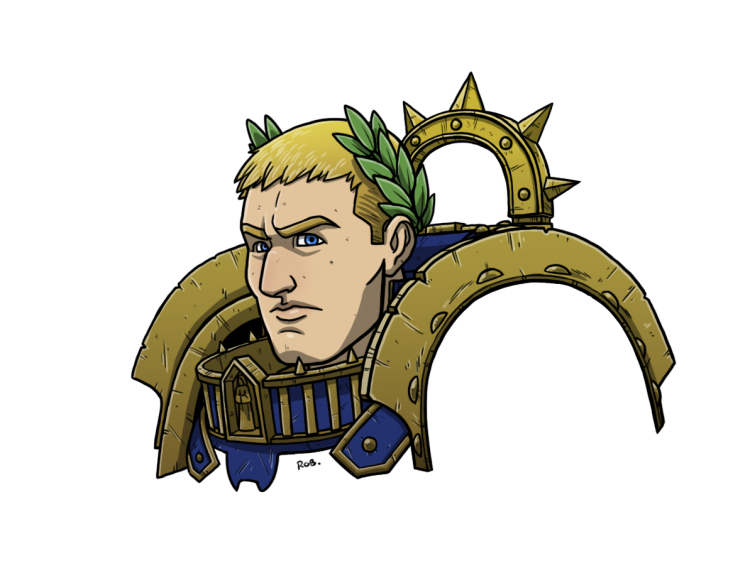
Hubris of Monarchia (audio drama), by Andy Smillie
This short story is about an Ultramarines Praetor whose hubris gets him and his whole squad in deep trouble. I mean, it’s there in the title. I’m highlighting this particular story because I think it gives great insight into one of the most entertaining things I found from HH 2.0: the Ultramarines Traitor Warlord Trait. Captain Alcaeus’ personality is *why* that warlord trait is one of the best examples of the fluff, and thus this story gives a good narrative “hook” to build yourself an Ultramarines “Traitor” force. You don’t have to be a Heretic, follower of the Warmaster, or The Master of Mankind to be a deluded asshole.
Unremembered Empire, by Dan Abnett
Ok, ok, I know a lot of people don’t like this one at all. Even Dan, I suspect, isn’t the biggest fan. Having said that, the Ultramarines are empire builders, and Unremembered Empire gives us Ultramar at its height as the capital of Imperium Secundus and that is worth a look. The Ultramarines never really got their origin novel – perhaps as Angron complained (in Betrayer), that story is too kind and easy to commemorate – and Unremembered Empire must stand as the closest we get, with Roboute pondering the meaning of empire, legacy and leadership amidst the chaos of a million loose ends getting tied up.
This book, moreso than most of the others, demonstrates how Guilliman’s upbringing influenced the Thirteenth Legion and infused them with optimism. One of the main character’s is Guilliman’s mother, and her role and bravery illuminates both one of the central characters of the Warhammer universe. Also, even during the worst days of the Heresy Guilliman…will assign his Ultramarines 10th Grade English Homework.
Pharos, by Guy Haley
When Pharos was released, it was a sign that the Horus Heresy series was beginning to regain the steam it had lost from those first few novels. The central conflict involves a Scout Squad of Ultramarines (who would eventually go on to form the basis of the Scythes of the Emperor) and some other Ultramarines (who would eventually become the Novamarines) facing off against a massive Night Lords attack on the planet Sotha. The Loyalists – including effectively two future Chapters of Ultramarines, a squad of Sothan Militia, Alexis Polux, and Warsmith Dantioch trying to hold a mysterious and relatively not-understood alien lighthouse against overwhelming force. This novel shows just how the Ultramarines inducted from throughout the 500 Worlds become Ultramarines in spirit, and how the Sons of Guilliman teach the Theoretical/Practical of Ultramarine-y thought.
Arguably part one of a story Haley is telling that connects with “Wolfsbane” and “The Great Work” re: Cawl freely looting stuff from the Necrons, but this one is a fun, exciting read. as it was released before the 2016/2017 Triumvirate boxes/The Gathering Storm supplements.
Salamanders
Another broken-at-Istvaan Legion that didn’t ever really get a stand out book. Vulkan has his own, very odd, path to follow within the Heresy, but the rest of his Legion mainly play second fiddle in other books, or star in a mini series that just never quite delivered on its promise.
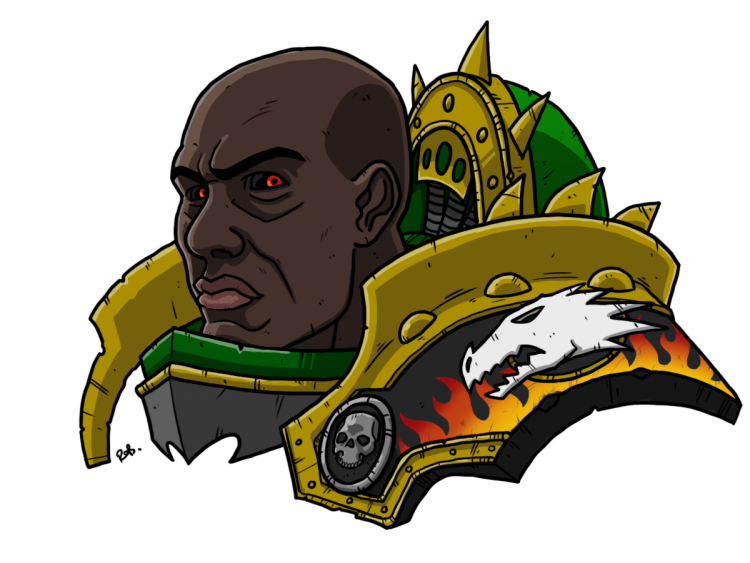
Vulkan: Lord of the Drakes, by David Annandale
Vulkan’s Primarchs novel is probably one of my favorite novels within that subseries. The novel is set around the war in which Vulkan joins the Eighteenth Legion and the Salamanders. The novel gives insight into the Terran Eighteenth Legion, their mentality, their doctrine, and who those Astartes are as people. At the same time, the novel also gives phenomenal insight into the way Vulkan plans to reform the Eighteenth and the Salamanders, including the “why” Vulkan and The Emperor have with their strategies for doing so. This novel, in contrast to most other Warhammer novels, is so optimistic: reading the novel feels uplifting because the characters are generally good people trying to do good things. This is pretty much unheard of in the Heresy (and honestly, within the whole of Black Library fiction).
Promethean Sun, by Nick Kyme
Promethean Sun is an odd one, almost as much – and certainly more interestingly – about the Exodites (Exodite list when GW????) as the Salamanders, but Kyme gives us some interesting insights into both Nocturne and Vulkan before the arrival of the Emperor and contrasts the only good guy legion with the weird Iron Hands and the creepy Death Guard. As far as novellas go, it’s a very slim little thing and – unlike when it was originally published – it’s not too difficult to get a hold of these days. Worth a punt.
Raven Guard
Ok, Raven Guard fans. Someone’s going to disagree with me out in the comments but I’m going to put it out there: you’ve had no really good fluff. Possibly ever. In fact, even worse than the Iron Hand leading the Iron Hands, you’ve got the common Raven leading the Ravens with his Edgar Allen Poe goodbye line, all your heroes are literally just Latin names for common birds, and your thing is that you’re the whitest and palest of all the pasty-white marine legions. Sorry guys. Oh, and your Primarch gets to good-naturedly clown on Guilliman.
The best things the Raven Guard get for them is one of Citadel’s best paints and the fact that Dan Boyd is placing his prodigious painting talents into making the Ninteenth look fantastic.

Shadowmasters, by Gav Thorpe
An auditory commercial to buy the Raven Guard’s unique unit, Mor Deythan. It’s a short and sweet story about how the Raven Guard’s method of warfare work, and is helpful in trying to come up with an army style for your Raven Guard army. Even though it’s very much a buy this forgeworld kit story, it’s a fun little bit of stealth and murder, and the kit IS very nice.
Corax Lord of Shadows, by Guy Haley
After a long wait, the Raven Guard Primarch book does do at least some justice to the core concepts of the legion – stealth, freedom, choice, rebellion and all that jazz. Here, Corax is more than a brooding 19th-century-writer-quoting 30k Crow, and a fleshed out Lord of the Imperium with his own goals, desires and conflicts. Haley manages to give us one of the clearest “even the 30k Imperium are the bad guys” narratives while still having plenty of fun, and keeping the tightrope of unbound vengeance and stifling order ever present. Exploring the most emo primarch and his entire character being “I rebel, stealthily” within the iron grip of the Emperor’s perfect order is a difficult task, and Haley gets us through what could have been a minefield of cliches. He also learns Guilliman’s greatest secret early on in the novel.


